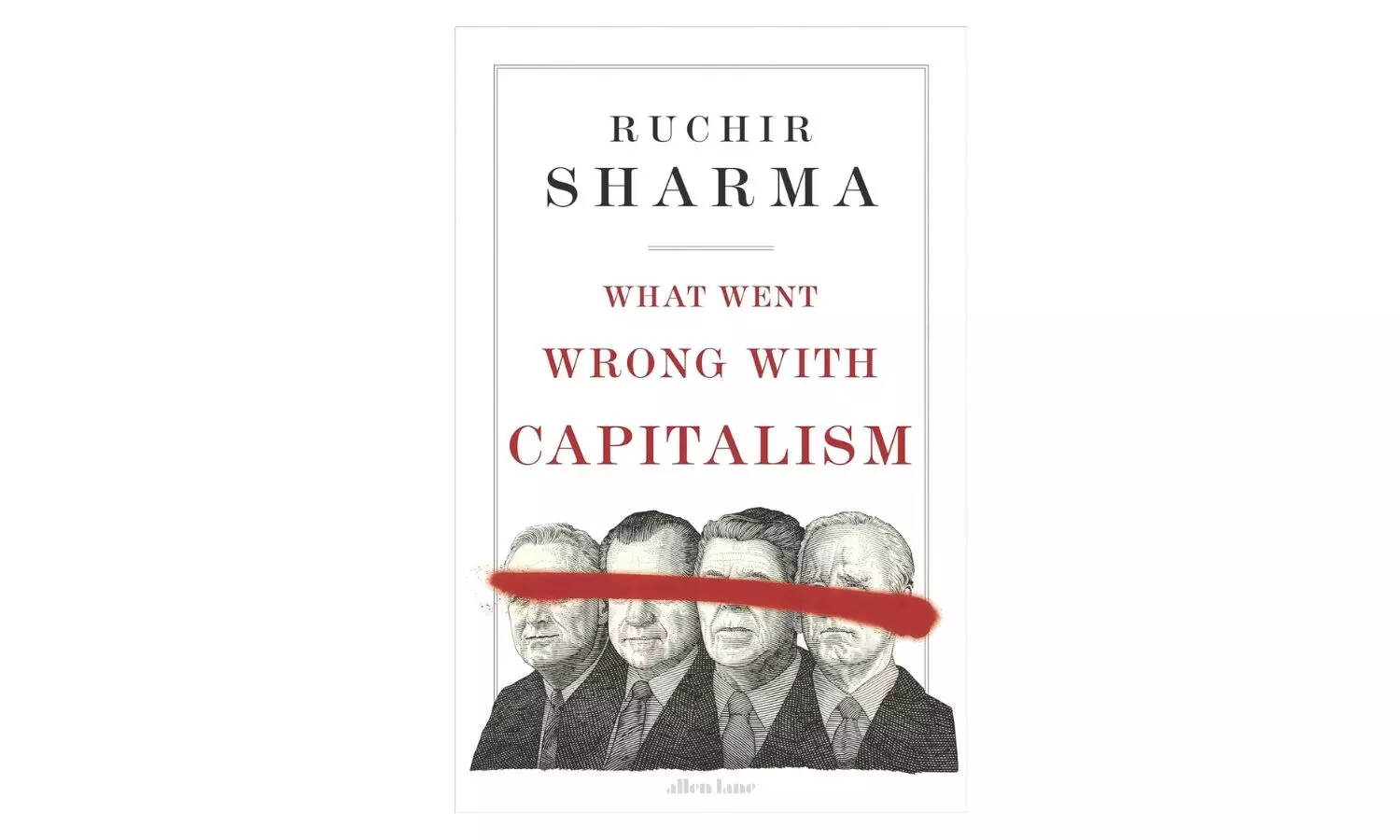An idea derailed!
In ‘What Went Wrong With Capitalism’, Ruchir Sharma contends that modern capitalism’s failures arise from coinciding government interventions, resulting in ‘socialised risk’ across all classes; he proposes seven reforms to restore the balance between state support and free markets. Excerpts:

Today the economic leaders of the capitalist world are like the doctor who was trained to spot one affliction and ended up blind to all the others. Since the threat of consumer price inflation had nearly vanished in recent decades, many politicians and government officials came to think that central banks can continue pumping easy money into the economy without regrettable consequences. In the United States, one of the precious few things progressive Democrats and Trump Republicans shared was a fondness for easy money as a way to fund their spending agendas. Never mind that easy money feeds other, equally crippling infirmities.
Full of good intention, these doctors made the system much more fragile. As government money inflated financial markets, and the financial markets grew much larger than the economy, recessions increasingly followed from crises in the markets. Governments quickly learned to step in faster and faster, to make sure market shocks didn’t spill over into the economy. By 2019, only 7 percent of the nearly two hundred economies tracked by the International Monetary Fund were in recession, and only 3 percent were expected to fall into recession during the following year—near a record low. The U.S. economy was in recession half the time in the late nineteenth century, one-fifth of the time between the end of World War II and 1980, and just one-tenth of the time after 1980.
If this looks like stability, it isn’t. If constant support dampens the business cycle and makes recessions less frequent, it also builds up debt in the system, which makes downturns much more destructive when they do arrive. That is why the Great Recession of 2007-09 was reminiscent of the Great Depression: it was magnified by debts built up over the prior decade.
The long-term problem for capitalism is not fewer or lighter recessions. No one would complain, much less vote for angry populists, because recessions aren’t more common. The problem is that the same government interventions that dampen recessions also undermine the subsequent recoveries. Each downturn leaves a bigger pile of debt, and more unproductive corporate creatures of debt, and this waste stunts the subsequent rebounds. In the United States, wild swings in growth—from below 5 percent to above 5 percent—were common before the 1950s but subside after 1980. Illustrated on a chart, this flattening trend looks like the EKG of a dying patient.
Across all advanced countries, creeping stagnation slowed the average pace of economic growth during recoveries from 4 percent before 1980 to 2.5 percent after 2009. In the United States, where the data goes back further, the pace of recoveries fell from more than 7 percent in the late nineteenth and early twentieth centuries to 4 percent after 1945, just over 3 percent after 1980, and less than 2 percent from 2009 until the pandemic hit in 2020—the longest and weakest expansion ever. Meanwhile, Wall Street had enjoyed four decades of increasingly prosperous bull markets, and the 2010s were the best yet.
THE COMMITTEE TO SAVE THE WORLD
In crises, media commentators had begun to celebrate governments and central banks as heroic firefighters, no matter the role they played in starting these fires. In 1999, Time ran a cover on “The Committee to Save the World,” which captured the worshipful new mood. Published after U.S. authorities had quickly improvised bailouts to slow the spread of the Asian financial crisis, the cover image featured Alan Greenspan, grinning, front and center. Standing just behind Greenspan were Treasury secretary Robert Rubin and Rubin’s imminent successor, Lawrence Summers. The story itself traced the personal ties between these financial leaders of the free world, who turn out also to have been tennis buddies.
During subsequent crisis, this cooperation grew so tight, it no longer made sense to picture the Fed as neutral technocracy. The Fed was working ever more closely with the Treasury to organize corporate bailouts, fund the government and its deficit spending, even fill Treasury coffers with proceeds from its exploding asset purchases. In 2008, Treasury secretary Henry Paulson and Fed chair Ben Bernanke worked together as a lobbying tag team, scaring Congress into passing a $700 billion bank relief program, warning that refusal to do so would lead to “financial Armageddon” and “rioting in the streets.” When the heads of nine major banks balked, because accepting relief would raise doubts about their solvency, Paulson and Bernanke persuaded them to take it anyway, or expect a knock on the door from regulators. They wanted big banks to accept so that smaller, weaker ones would follow.
(Excerpted with permission from Ruchir Sharma’s ‘An Olympian’s Tryst with Soldiering’; published by Penguin Random House)



